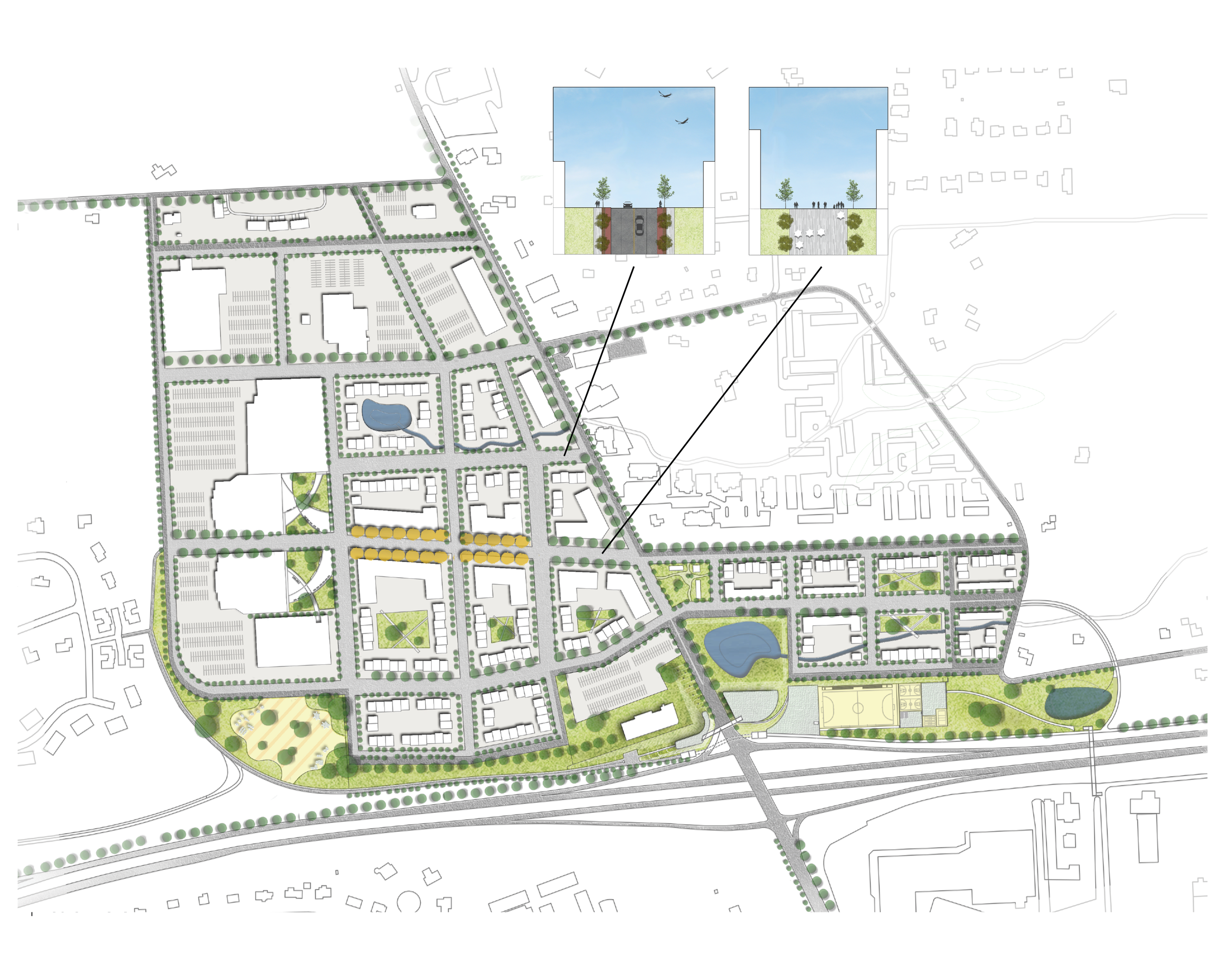





For CRP 5072: Advanced Urban Design Workshop during Fall 2019 in Lansing, New York with Xinyu He and Xiuying Zhan.

This past fall, the Advanced Urban Design Workshop in Cornell AAP focused on a local site in dire need of rethinking: the Ithaca and Cayuga shopping malls in Lansing, just north of Cornell’s campus. In analyzing the site, we realized that there was a unique opportunity to understand the malls as a cross roads or a gateway between urban and rural development.

We thought of restructuring the site in both the short term and in the long term. In the short term, we created a plan to use incremental urbanist techniques to highlight and call attention to the shortcomings of the existing site: poor pedestrian circulation, far too much parking space, and empty store spaces within the mall. Our team planned to create pop-up retail spaces both inside and outside the mall, functionally putting life back into empty stores and creating the conceptual connection between the interior and exterior spaces of the site. We also planned new pedestrian connections in and around the two malls. The above image shows the existing site conditions with our planned interventions highlighted in different colors.

In the much longer term, we envisioned completely rethinking the space as a mixed-use, pedestrian-oriented development. We planned to keep a handful of successful existing stores and the cinema, but redesigned the entire space under the concept of a “Lansing Town Center.” At the very center of the redesign is a park with a tower that functions as a visual anchor for the two axes of the new urban fabric. The first axis is Triphammer road, an existing important thoroughfare. The other is a pedestrian-only walkway that runs east to west and ties together the parts of Lansing that were once strip malls floating in seas of parking. Development is most dense along this corridor, and falls into more residential as you move north or south. We also created a strip of parks along the southern edge of the site that include a trail connecting both ends of the pedestrian corridor, thus forming a walking and running loop through and around the site.